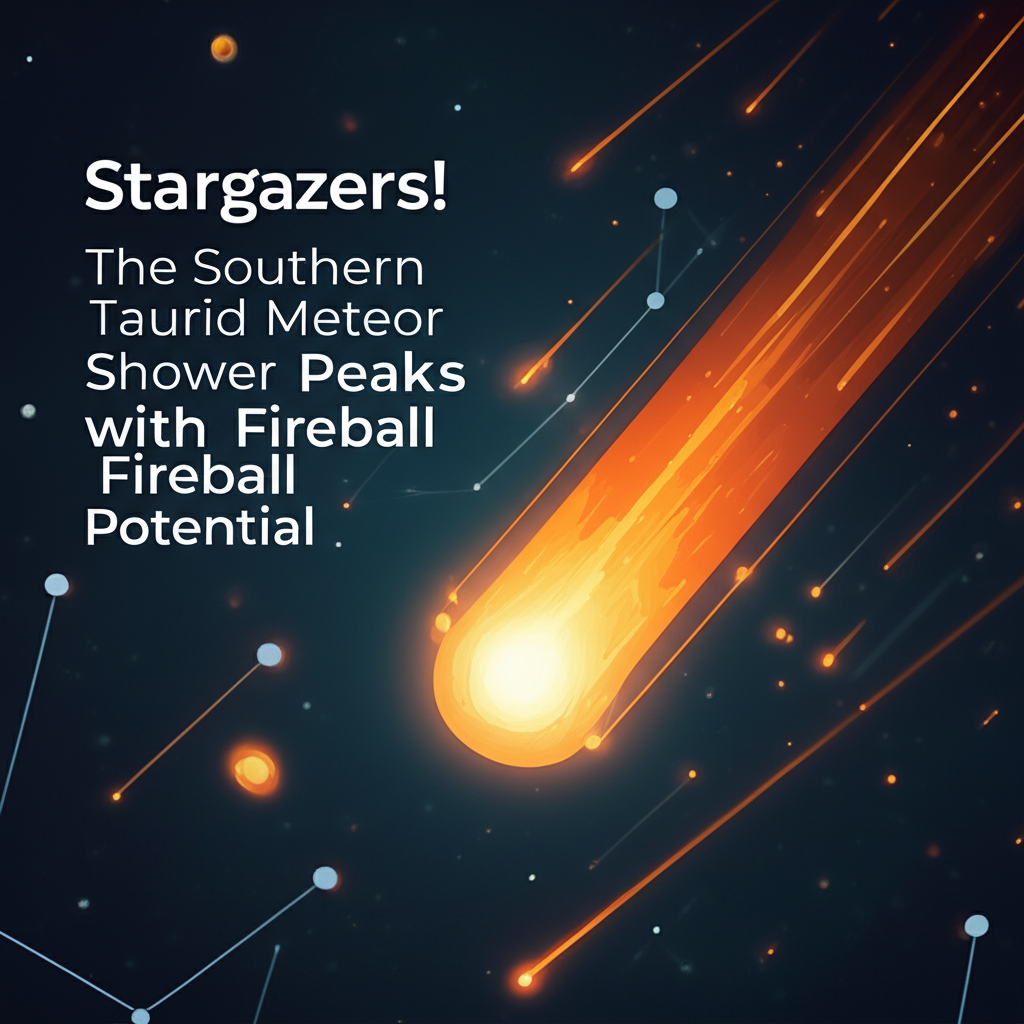Stargazers, Get Ready! The Southern Taurid Meteor Shower Peaks with Fireball Potential
A celestial spectacle not to be missed on November 4-5.

Catching the Celestial Fire Show
For those who love to gaze at the stars, mark your calendars! The annual Southern Taurid meteor shower is gearing up for its peak performance overnight from November 4th to 5th. This isn't just any meteor shower; astronomers are predicting an increased chance of seeing brilliant, long-lasting fireballs, making this year's event particularly exciting for stargazers.
Our planet is about to pass through a denser-than-usual stream of cosmic debris left behind by Comet Encke. This means more material will enter Earth's atmosphere, creating a dazzling display of shooting stars, some of which could be exceptionally bright. So, if you've been looking for an excuse to spend a night under the stars, this is it!

What Are the Southern Taurids?
The Taurids are a long-running meteor shower, active from late October through November, and they actually consist of two branches: the Northern Taurids and the Southern Taurids. Both originate from debris shed by Comet Encke, a short-period comet that orbits the Sun. When Earth passes through these trails of dust and pebbles, the particles burn up in our atmosphere, creating the streaks of light we call meteors or "shooting stars."
While not known for high meteor rates (typically only 5-10 meteors per hour), the Taurids are famous for producing a higher percentage of bright meteors and the occasional fireball. These fireballs are exceptionally luminous meteors that can be as bright as Venus or even brighter, often lasting for several seconds and sometimes even casting shadows.
When and Where to Look Up
- Peak Night: The best viewing window will be overnight on November 4-5, typically starting after midnight and continuing until dawn.
- Location: To maximize your chances, find a location far away from city lights. Light pollution is the biggest enemy of stargazing.
- Direction: The meteors will appear to emanate from the constellation Taurus (hence the name). However, you don't need to pinpoint Taurus exactly. The best strategy is to lie back comfortably and scan the entire night sky.
- Moon Phase: Luckily, the moon will be a waning crescent during the peak, meaning its light won't significantly interfere with the view, providing an optimal night sky for observation.

Tips for a Memorable Stargazing Experience
- Find Dark Skies: This is paramount. The darker your location, the more meteors you'll see, especially the fainter ones.
- Patience is Key: Give your eyes at least 20-30 minutes to adjust to the darkness. Don't get discouraged if you don't see anything immediately.
- Dress Warmly: November nights can be chilly. Bring blankets, a warm drink, and dress in layers.
- Comfortable Viewing: A reclining chair, sleeping bag, or even just a blanket on the ground will make your experience much more enjoyable.
- No Special Equipment: You don't need a telescope or binoculars for meteor showers; your naked eye is the best tool for observing the wide expanse of the night sky.

Why This Year's Southern Taurids Are Special
Every few years, roughly every 5 to 7 years, the Earth passes through a denser filament of debris within the Taurid stream. 2023 is expected to be one of those years. This means there's a higher probability of encountering larger particles, which create those magnificent, bright fireballs that can be seen across vast distances. While the overall hourly rate might not be dramatically high, the quality of the meteors, especially the chance of witnessing a fireball, is significantly boosted. This makes the celestial event a must-see for astronomy enthusiasts.





